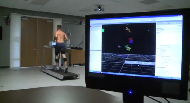New Year's Resolutions: Train Smart, Not Hard
Posted by Kelly Carmichael, USATF Certified Coach on January 7, 2013

The Starting Line: How can I keep my New Year’s resolution and step up my training? A New Year’s Resolution is a promise to better yourself. Many people resolve to lose weight, run more often, or achieve that elusive personal record. Whatever your goals, the best way of achieving them is to train smart, not hard. One of the most common resolutions is to adopt and maintain a regular exercise...
Four Steps to Take Before Starting to Train
Posted by Kelly Carmichael, USATF Certified Coach on December 24, 2012

The Starting Line: How do I begin to train for my upcoming race? Whether you are training for your first 5k or your annual marathon, there are a few steps you need to take before lacing up your sneakers. Regardless of your experience level, it is important to plan certain aspects of your training before you even begin. Follow these simple steps to success in your training this year! 1. Set a Goal In o...
Caffeine and Running
Posted by Janine Wong MS, RD on December 10, 2012

The Starting Line: Does caffeine improve running performance? Caffeine is a safe and naturally occurring drug, well known for its “energy boosting” properties. Many beverages and foods naturally contain caffeine, and it is a popular additive in energy and sport drinks and gels (see table below). Caffeine is absorbed rapidly via the stomach lining, peaks in the blood in 30 minutes to 2 hours,...
Plantar Fasciitis: Problems and Solutions
Posted by Anthony Luke MD, MPH on December 5, 2012

The Starting Line: Why do I have heel pain when I run and what can I do about it? Plantar fasciitis is the third most common injury in runners. The fibrous insertion of the plantar fascia into the heel (a.k.a. the calcaneus) is stretched by the repetitive stress of running. Tenderness is often located on the inside aspect of the heel where the arch of the foot ends and the heel contacts the ground. This...
News Feature: Running Cadence and Stride Length
Posted by The RunSafe Team on November 28, 2012

In one of our previous posts, we discussed the effect of cadence manipulation on impact injuries. Cadence manipulation - intentionally changing the number of steps in a minute during running - is an indirect strategy that can shorten stride length. By increasing the number of steps per minute, the runner intuitively reduces the stride length. There is evidence that suggests increasing cadence by even 10% can reduce fo...

